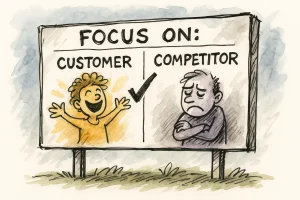
The running market has grown exponentially in recent years. Marathons, road races, and personalized training have become popular activities, and more people are seeking professional guidance to improve performance, avoid injuries, and reach health goals. A running personal trainer is more than an instructor: they are a specialist who combines technical knowledge, strategic planning, and motivation to transform their clients’ performance.
Market Overview
The running coach or specialized personal trainer market is fueled by trends in health, wellness, and active lifestyle. Road races and amateur competitions have gained popularity, creating consistent demand for professional guidance.
Key market characteristics:
- Growth of personalized fitness: People seek plans tailored to specific goals, whether weight loss, endurance, or competitive performance.
- Fragmented competition: There’s space for specialization in niches, from beginner runners to advanced athletes.
- Value of measurable results: Clients pay more for coaches with proven expertise, successful track records, and science-based techniques.
- Integration with technology: Monitoring apps, wearables, and online platforms allow remote coaching, expanding reach.
The market is dynamic, resilient, and allows hybrid business models, combining in-person sessions, group training, and digital coaching, increasing revenue without proportionally increasing costs.
How the Business Works Step by Step
- Certification and Training
- Obtain certifications in physical education, sports training, or running specialization.
- Knowledge of physiology, biomechanics, injury prevention, and sports nutrition is essential.
- Define Niche and Target Audience
- Beginner athletes, road runners, marathoners, individuals seeking weight loss or rehabilitation.
- Specialization increases perceived value and allows charging premium prices.
- Create Portfolio and Online Presence
- Social media, blogs, demo videos, and client testimonials build credibility.
- Own websites and fitness platforms increase visibility and reach.
- Service Offering
- Individual sessions, group training, online programs, workshops, and personalized consultations.
- Recurring packages help retain clients and generate predictable revenue.
- Marketing and Client Acquisition
- Digital strategies and partnerships with gyms, sports stores, and running events.
- Participation in races or events as a mentor or organizer boosts visibility.
- Execution and Monitoring
- Initial client assessment, goal setting, ongoing monitoring, and adjustments based on performance.
- Use apps, wearables, and spreadsheets to track performance and provide feedback.
- Expansion and Diversification
- Online courses, corporate group training, in-person workshops, sale of training support products.
- Potential to create franchises or networks of associated coaches.
Why Invest in This Business?
- Growing demand for health and performance: Target clients are willing to pay for professional guidance.
- Low initial investment: Basic equipment, certifications, and digital marketing are sufficient to start.
- High profit potential: Recurring plans, group training, and consultations increase margins.
- Flexibility and scalability: In-person, online, and group sessions allow expansion without proportionally increasing fixed costs.
- Alignment with wellness trends: People value a healthy lifestyle and are willing to invest in health.
Business Analysis Table
| Criterion | Rating (1 to 5) | Comments |
|---|---|---|
| Customers perceived value | 5 | High appreciation for expertise and personalized results. |
| Required Knowledge level | 4 | Advanced technical knowledge and certifications required. |
| Initial Investment level | 2 | Basic equipment and initial marketing are sufficient. |
| Potential profitability | 5 | High margins with individual, group, and online coaching. |
| Growth potential | 5 | Expansion via online training, workshops, and corporate packages. |
| Customer acquisition cost | 3 | Digital marketing and partnerships help reduce costs. |
| Risk and challenges level | 3 | Moderate risk; depends on reputation and consistent results. |
| Estimated Time to payback | 6-12 months | Quick return if well positioned with a consistent client base. |
Business Model
- Value Proposition: Personalized running training that improves performance, endurance, and health, with ongoing support and technical guidance.
- Customer Segments: Beginner runners, amateur athletes, marathoners, corporate clients, and health-focused individuals.
- Channels: In-person sessions, fitness apps, social media, workshops, partnerships with gyms and sports events.
- Customer Relationships: Personalized programs, continuous feedback, online support, training communities.
- Revenue Streams: Individual sessions, recurring packages, group training, online consultations, workshops, and digital courses.
- Key Resources: Certifications, basic training equipment, technical knowledge, portfolio, monitoring software.
- Key Activities: Physical assessment, training planning, performance monitoring, marketing, client relationship management.
- Key Partnerships: Gyms, sports stores, race organizers, online fitness platforms.
- Cost Structure: Certifications, marketing, equipment, software, transportation, operational expenses.
Market Entry Strategies
- Choose a specialized niche: Beginner runners, marathoners, or corporate clients.
- Digital marketing and social media: Create educational and demonstrative content.
- Strategic partnerships: Gyms, sports stores, and running events.
- Offer online programs: Digital training allows scaling without significantly increasing costs.
- Loyalty programs: Ongoing coaching plans to ensure recurring revenue.
Practical Tips and Tools
- Monitoring apps: Strava, Garmin Connect, or custom client platforms.
- Management software: CRM, training schedules, and payment tracking.
- Basic equipment: Stopwatch, training mat, cones, and markers.
- Certifications: Degrees in physical education, sports training, or running coaching.
- Continuous communication: WhatsApp groups, newsletters, and personalized feedback increase retention.
Conclusion
Being a running personal trainer is more than teaching people to run – it’s providing health, performance, and an active lifestyle in a structured way. With low initial investment, high profit potential, and multiple channels of engagement, this is an underestimated but highly promising business. Strategy, marketing, specialization, and consistent delivery of results are key to turning passion into a profitable enterprise.
Call-to-Action
Ready to turn your passion for running into a successful business? Invest in certifications, build your portfolio, develop differentiated programs, and attract clients who value health, performance, and measurable results. The market is waiting for coaches who can deliver quality and trust!






